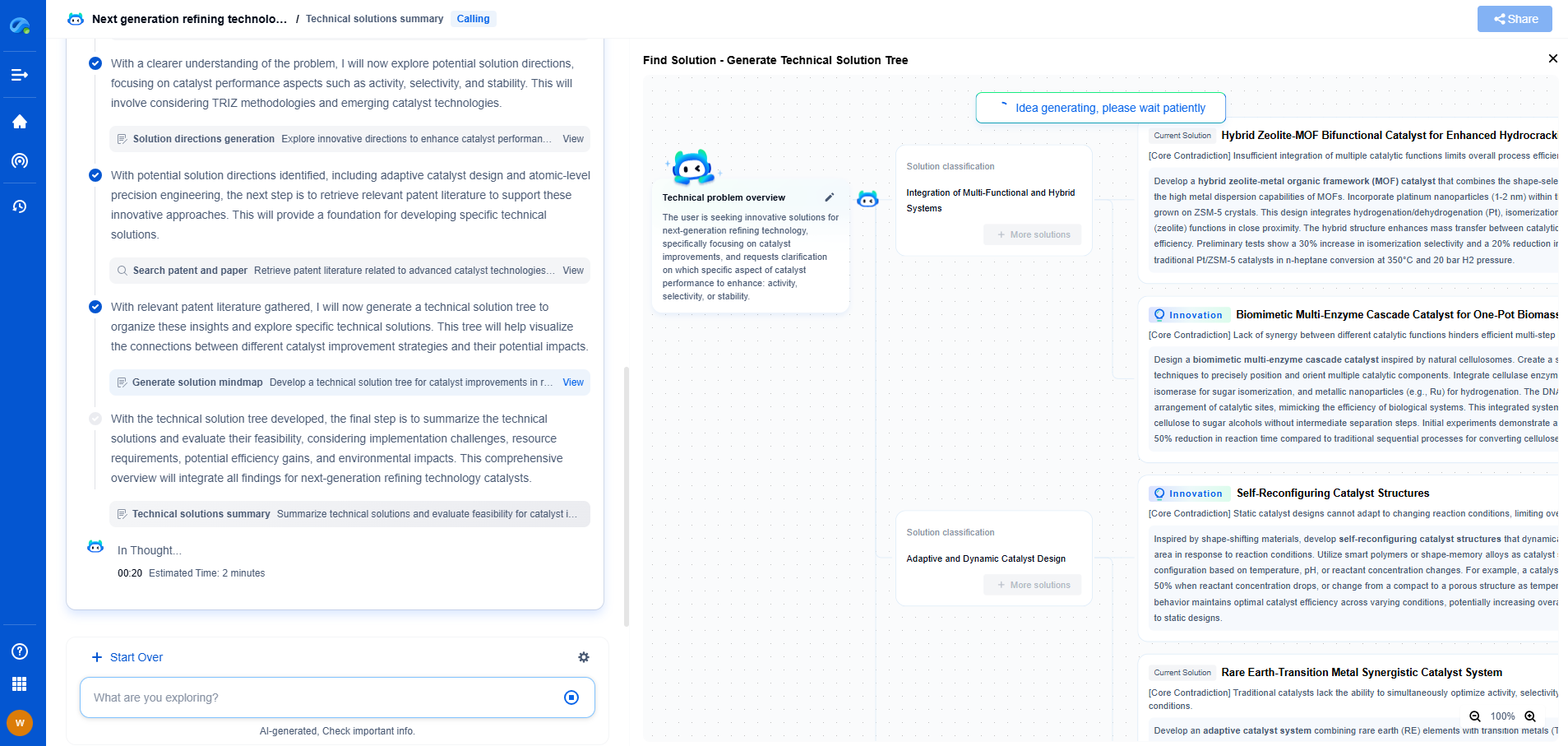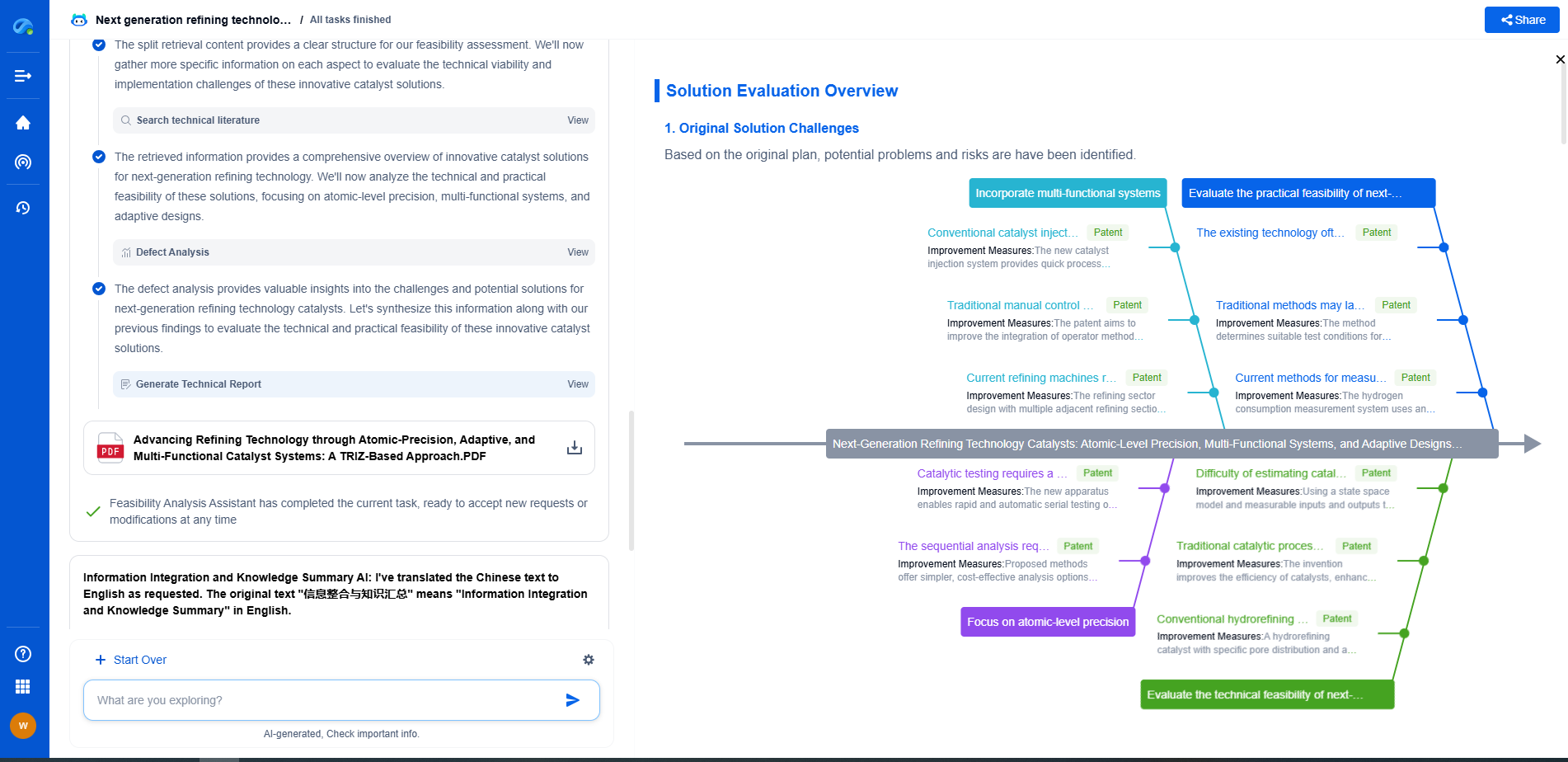AI-Driven RRM: Machine Learning for Smarter Resource Allocation
JUL 7, 2025 |
In an era where efficiency and optimization are paramount, industries across the globe are turning towards artificial intelligence to revolutionize the way resources are allocated. Resource allocation is the process of distributing available resources in the most efficient way, and when powered by AI, this process achieves new heights of precision and adaptability. AI-driven Resource Reservation Management (RRM) enables businesses to make informed decisions, reduce waste, and optimize performance, ultimately leading to smarter resource usage.
Understanding Machine Learning in Resource Allocation
Machine learning, a subset of AI, plays a pivotal role in enhancing resource allocation. At its core, machine learning involves data-driven algorithms that learn from patterns and make decisions without being explicitly programmed. This capability allows systems to predict future resource demands accurately and allocate resources dynamically.
Machine learning models analyze vast amounts of historical and real-time data to identify trends and patterns that humans might overlook. By leveraging these insights, organizations can forecast demand fluctuations, adjust resource distribution in real-time, and ensure optimal utilization.
Benefits of AI-Driven RRM
1. Enhanced Efficiency and Productivity
One of the primary benefits of AI-driven RRM is the significant boost in efficiency. By automating the resource allocation process, AI reduces the need for manual intervention and minimizes human error. This leads to more consistent and reliable resource distribution, maximizing productivity.
For instance, in manufacturing, AI algorithms can predict equipment maintenance needs, preventing downtime and ensuring smooth operations. In the tech industry, cloud service providers use AI to allocate computing power dynamically based on demand, optimizing performance and cost.
2. Cost Reduction
AI-driven RRM leads to substantial cost savings. By optimizing resource utilization, businesses can lower operational costs and reduce waste. Machine learning models can identify areas of inefficiency and suggest actionable improvements, resulting in leaner and more cost-effective operations.
Moreover, AI's ability to predict resource requirements accurately means businesses can avoid over-provisioning, which often leads to unnecessary expenses. This proactive approach to resource management translates into significant financial benefits.
3. Scalability and Flexibility
The scalability and flexibility offered by AI-driven RRM are crucial in today's fast-paced business environment. As companies grow and markets evolve, resource demands change. AI models are inherently adaptable, continuously learning from new data and adjusting resource allocation strategies accordingly.
This adaptability allows businesses to scale operations seamlessly, whether expanding into new markets or responding to sudden surges in demand. AI-driven RRM ensures that resources are always aligned with current business needs, providing a competitive edge.
4. Improved Decision-Making
AI-driven RRM empowers decision-makers with actionable insights derived from data analytics. By providing a comprehensive view of resource allocation patterns and performance metrics, AI enables informed decision-making at every organizational level.
Executives can use these insights to develop strategic plans, while managers can focus on fine-tuning operations. This data-driven approach enhances agility, allowing organizations to respond swiftly to changing circumstances and emerging opportunities.
Challenges and Considerations
While the benefits of AI-driven RRM are compelling, implementing such systems is not without challenges. Data quality is paramount; inaccurate or incomplete data can lead to flawed predictions and suboptimal resource allocation. Organizations must invest in robust data collection and management processes to ensure the integrity of their AI models.
Moreover, the complexity of AI algorithms necessitates skilled personnel for implementation and maintenance. Businesses must either train existing staff or hire experts proficient in AI and machine learning to maximize the potential of AI-driven RRM.
Conclusion: Embracing the Future of Resource Allocation
As we advance further into the digital age, the integration of AI in resource allocation will become increasingly indispensable. AI-driven RRM offers a transformative approach to managing resources, enhancing efficiency, reducing costs, and improving decision-making. By embracing these technologies, businesses can not only optimize their operations but also position themselves strategically in a rapidly evolving marketplace. In the end, AI-driven resource allocation is not just about smarter resource usage; it's about driving innovation, achieving sustainable growth, and unlocking new possibilities for the future.
Empower Your Wireless Innovation with Patsnap Eureka
From 5G NR slicing to AI-driven RRM, today’s wireless communication networks are defined by unprecedented complexity and innovation velocity. Whether you’re optimizing handover reliability in ultra-dense networks, exploring mmWave propagation challenges, or analyzing patents for O-RAN interfaces, speed and precision in your R&D and IP workflows are more critical than ever.
Patsnap Eureka, our intelligent AI assistant built for R&D professionals in high-tech sectors, empowers you with real-time expert-level analysis, technology roadmap exploration, and strategic mapping of core patents—all within a seamless, user-friendly interface.
Whether you work in network architecture, protocol design, antenna systems, or spectrum engineering, Patsnap Eureka brings you the intelligence to make faster decisions, uncover novel ideas, and protect what’s next.
🚀 Try Patsnap Eureka today and see how it accelerates wireless communication R&D—one intelligent insight at a time.
- R&D
- Intellectual Property
- Life Sciences
- Materials
- Tech Scout
- Unparalleled Data Quality
- Higher Quality Content
- 60% Fewer Hallucinations
Browse by: Latest US Patents, China's latest patents, Technical Efficacy Thesaurus, Application Domain, Technology Topic, Popular Technical Reports.
© 2025 PatSnap. All rights reserved.Legal|Privacy policy|Modern Slavery Act Transparency Statement|Sitemap|About US| Contact US: help@patsnap.com

